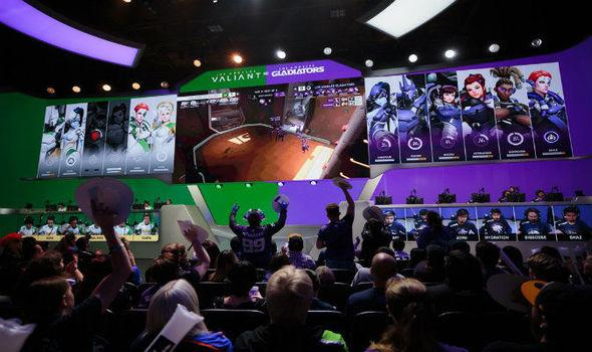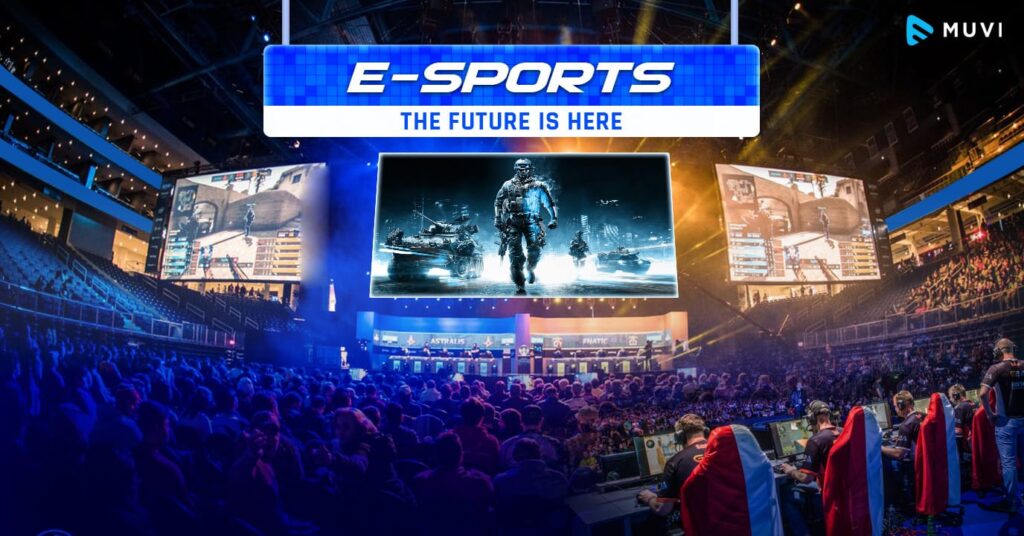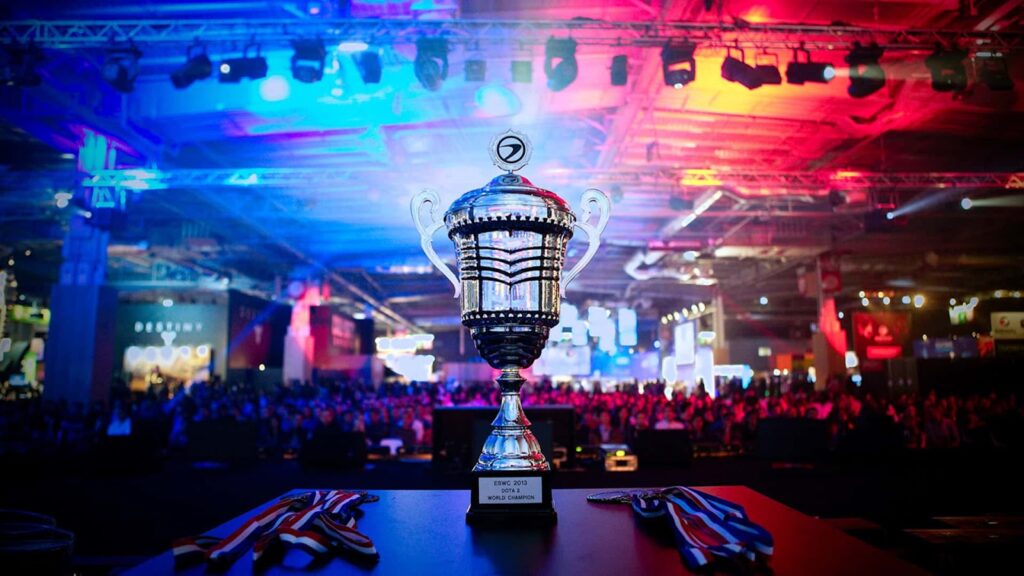The History of Electronic Sports (Esports) and Its Importance Today

The realm of electronic sports, commonly referred to as “esports,” has undergone a remarkable transformation from a specialized subculture to a global phenomenon in recent decades. Originating as small gatherings of enthusiasts, the competitive domain of video games has evolved into a multibillion-dollar industry, captivating millions of viewers and participants worldwide. With the advent of large-scale global tournaments, lucrative sponsorships, and widespread recognition, esports have seamlessly integrated into the fabric of contemporary entertainment and sports culture. This essay delves into the intricate history of esports and its profound significance in the modern era.
The Early Days: The Birth of Competitive Gaming
The origins of esports can be traced back to the early 1970s when video games were still in their infancy. One of the first known competitive gaming events took place in 1972 at Stanford University, where students competed in a game called *”Spacewar!“. The prize for the winner of this tournament was a year’s subscription to **Rolling Stone** magazine, far removed from the multi-million-dollar prizes seen in modern esports tournaments.
In the 1980s, the rise of arcade games like ‘’Pac-Man’’, ‘’Donkey Kong’’, and ‘’Space Invaders’’ popularized video gaming as a form of entertainment. Arcade tournaments began to emerge, with players competing for high scores and recognition. One of the most notable early competitions was the ‘’Space Invaders Championship’’, organized by Atari in 1980, which attracted over 10,000 participants. This marked one of the first large-scale gaming tournaments, foreshadowing the massive events that would follow decades later.
The 1990s: The Dawn of Online Gaming
The 1990s were a transformative decade for esports. Personal computers became more common, and the advent of the internet revolutionized competitive gaming. Games like “Doom’’ (1993) and ’’eQuak’’ (1996) introduced networked multiplayer modes, allowing players to compete against each other online. This development took competitive gaming out of arcades and living rooms and into a global arena.
The ‘’Cyberathlete Professional League (CPL)’’, founded in 1997, was one of the first major organizations to formalize esports competitions. The CPL hosted major tournaments for first-person shooter games like ‘’Quake’’ and later ’’Counter-Strike’’. The late 1990s also saw the rise of ‘’StarCraft’’, a real-time strategy game developed by Blizzard Entertainment. StarCraft became particularly popular in South Korea, where it laid the foundation for the country’s esports culture, which continues to thrive to this day.
The 2000s: Esports Goes Global
The 2000s witnessed the global explosion of esports, driven by faster internet speeds and the proliferation of multiplayer online games. ‘’Counter-Strike’’, ‘’Warcraft III’’, and ‘’StarCraft: Brood War’’ became staples of competitive gaming. Moreover, the rise of **LAN** (local area network) tournaments, where players gathered in physical locations to compete, became a common feature of the esports ecosystem.
In South Korea, esports enjoyed unparalleled growth, with the establishment of professional leagues and teams. The Korean government even recognized esports as an official sport, and television channels began broadcasting matches. ‘’StarCraft: Brood War”” became a national sensation, and professional gamers in South Korea achieved celebrity status.
Around the world, esports continued to gain traction. In 2003, **The World Cyber Games (WCG)**, often considered the “Olympics of esports,” was hosted, featuring games like **Warcraft III**, ‘’Counter-Strike’’, and “”FIFA””. This event attracted participants from over 60 countries, marking the global reach of competitive gaming.
In 2009, **League of Legends (LoL)** was released by Riot Games, a game that would soon dominate the world of esports. Its free-to-play model, combined with addictive gameplay and a strong emphasis on team dynamics, made it a massive success. Tournaments for League of Legends would grow to attract millions of viewers online, setting the stage for its status as one of the most-watched esports titles today.
The 2010s: Esports Enters the Mainstream
The 2010s were marked by esports’ transition from a subculture to a mainstream entertainment industry. The rise of streaming platforms like ‘’Twitch’’in 2011 allowed millions of fans to watch live esports matches from the comfort of their homes. This accessibility was a game-changer, allowing esports to rival traditional sports in terms of viewership. Professional players, once obscure figures, now had the opportunity to build personal brands and engage directly with their fan base.
In addition to League of Legends, other games like ‘’Dota 2’’, ‘’Counter-Strike: Global Offensive (CS:GO)’’, and ‘’Overwatch’’ became major forces in the esports world. ‘’Dota 2’’, developed by Valve Corporation, launched its first ‘’International’’ tournament in 2011, offering a prize pool of $1.6 million, an unprecedented sum at the time. By 2021, the prize pool for The International had swelled to over $40 million, showcasing the exponential growth of the industry.
Esports also began to gain recognition from traditional sports and corporate sponsors. Major companies like” “Intel“”, “”Coca-Cola”” and “Red Bull” entered the esports market, providing sponsorships that helped legitimize the industry. In 2018, the **Overwatch League (OWL)** was launched by Blizzard Entertainment, a franchised esports league modeled after traditional sports leagues like the “”NBA“” and “”NFL“”. The OWL attracted investments from traditional sports owners and organizations, further blurring the lines between esports and mainstream sports.
Esports Today: A Billion-Dollar Industry
As of the 2020s, esports has solidified its place as a global entertainment powerhouse. The industry is projected to surpass $1.5 billion in revenue by 2024, driven by sponsorships, advertising, merchandise sales, and media rights. Tournaments like the **League of Legends World Championship**, ‘’The International (Dota 2)’’, and ””CS:GO Major Championships’’ attract tens of millions of viewers, rivaling traditional sports events like the ‘’Super Bow’’ and the ‘’World Cup’’ in terms of viewership.
The Importance of Esports Today

1. Economic Impact
Esports has become a significant economic driver, creating thousands of jobs in areas like event management, marketing, game development, content creation, and team management. The industry’s growth has also spurred the development of esports arenas and training facilities, further boosting local economies.
2. Community and Social Interaction
Esports fosters a sense of community among players and fans. Online multiplayer games allow individuals to connect with others from around the world, forming friendships and rivalries. Esports events, both online and in person, bring people together and contribute to a shared sense of excitement and camaraderie.
3. Cultural Influence
Esports has a massive cultural impact, influencing fashion, music, and entertainment. Professional players and streamers have become cultural icons, and esports has inspired movies, documentaries, and TV shows. The blending of esports with pop culture has expanded its reach to broader audiences.
4. Career Opportunities
Beyond playing professionally, esports offers a range of career opportunities. From casters (commentators) and analysts to event organizers and game designers, the industry provides a wide array of jobs that cater to different skills and interests.

Starting from modest origins in arcades and college dormitories and progressing to large-scale international competitions, the ascent of esports has been an extraordinary journey. Today, it is established as an integral component of the global entertainment industry, with a dedicated fan base, profitable sponsorships, and widespread acceptance. Its significance goes beyond gaming alone—esports shapes culture, generates employment opportunities, and unites people worldwide. As technology continues to advance, the future of esports holds the promise of even greater achievements, cementing its position as a significant influence in contemporary society.”
The Rise of Esports in the Arab World
Esports, or competitive video gaming, has become a global phenomenon, and the Arab region is not an exception. Over the past decade, the popularity of esports has surged in various Arab countries, transforming gaming from a casual hobby into a mainstream entertainment industry. This article explores the rise of esports in the Arab world, the factors contributing to its growth, the challenges faced, and its future potential.
The expansion of Esports in the Arab Region
Escalating Popularity
The proliferation of internet connectivity and the widespread availability of gaming consoles and PCs have been pivotal in the exponential growth of esports in the Arab world. Nations such as Saudi Arabia, the United Arab Emirates, and Egypt have witnessed a remarkable surge in the population of gamers and esports aficionados. Notably, major international esports tournaments like the League of Legends World Championship and The International for Dota 2 have garnered substantial interest from both viewers and participants in the region.
Youth Involvement
The youth demographic in the Arab world has displayed significant engagement with esports. Studies indicate that over 70% of gamers in the region are under the age of 30. This young audience is not only consuming esports content but actively participating in gaming events, thereby fostering a dynamic community centered around competitive gaming.
Key Factors Driving Esports Growth
Infrastructure Development
One of the significant factors behind the growth of esports in the Arab region is the investment in infrastructure. Governments and private entities have recognized the potential of esports as a lucrative industry. For instance, Saudi Arabia has launched initiatives to host international gaming events and has invested in esports arenas and training facilities.
Sponsorship and Investment
With the growing popularity of esports, sponsorship deals have become more common. Major brands now invest in esports teams, tournaments, and events, recognizing the potential for brand engagement with a young audience. This influx of investment has further fueled the growth of the esports ecosystem in the region.
Digital Platforms and Streaming
The rise of digital platforms like Twitch and YouTube Gaming has made it easier for gamers to stream their gameplay and engage with audiences. Local streaming platforms have also emerged, catering specifically to Arabic-speaking audiences. This accessibility has helped foster a sense of community and has allowed local talent to gain recognition.
Challenges Facing Esports in the Arab World
Cultural Perceptions
Despite the growth of esports, there are still cultural perceptions that can hinder its acceptance. In some regions, gaming is viewed as a waste of time or even harmful. This stigma can discourage parents from supporting their children’s interest in gaming and esports.
Regulation and Governance
The esports industry in the Arab world lacks uniform regulations and governance structures. This can lead to issues such as cheating, match-fixing, and lack of player protection. Establishing a regulatory framework is essential for the sustainable growth of esports in the region.
Limited Local Competitions
While there are several international tournaments, local competitions are still limited. This can make it challenging for aspiring professional players to gain experience and exposure. Increasing the number of local tournaments can help nurture talent and build a more robust competitive scene.
The Potential Growth of Esports in the Arab Region
saudi arabia
2022
Possibility of Expansion
The Arab world is looking at a bright future in the field of esports. The region is set for significant growth in the esports industry due to sustained investment in infrastructure, increasing involvement of young people, and expanding sponsorship opportunities.
Initiatives in Education
The significance of education and training in esports is gaining momentum. Various universities and institutions now provide courses related to game design, esports management, and streaming. This educational emphasis can help develop a skilled workforce that supports the esports ecosystem.
Development of Community
Establishing a robust community around esports is vital for its future success. Grassroots efforts, such as local gaming clubs and online communities, can help nurture a sense of belonging among gamers. Events that promote collaboration and competition can also enhance the liveliness of the esports scene.

Conclusion
Esports in the Arab world is on an exciting trajectory, driven by a passionate youth demographic, increasing investment, and the growing acceptance of gaming as a legitimate form of entertainment. While challenges remain, the growth potential is immense. By addressing cultural perceptions, establishing regulatory frameworks, and fostering local competitions, the Arab region can solidify its place in the global esports landscape. As the industry continues to evolve, stakeholders need to work together to create a thriving esports ecosystem that benefits gamers, fans, and the broader community.





